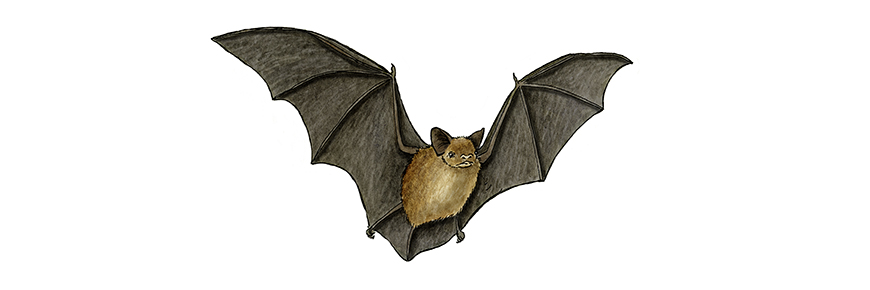
Illustration © Sheri Amsel
Little Brown Bat: Species at Risk recovery
Gulf Islands National Park Reserve
It’s easy to forget about bats. They’re awake when you sleep, so you don’t see them often. Even when you do spot them, they flit past quickly. People generally know more about animals they see in the daytime, but there’s a lot to learn about bats.
For instance, they face grave danger in Canada. A disease called white-nose syndrome is wiping them out in large numbers. Discover more about Parks Canada’s actions to help the Little Brown Bat or Little Brown Myotis (Myotis lucifugus). Learn what you can do to contribute.
Three reasons to love the Little Brown Bat:
1. It’s in trouble
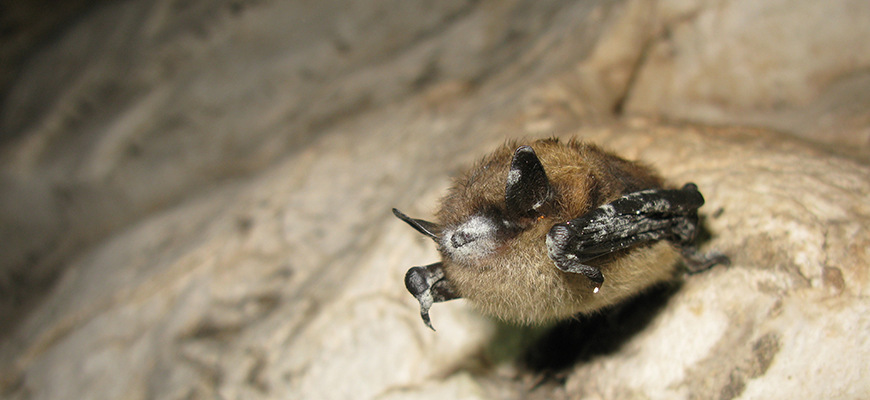
A deadly fungal disease called white-nose syndrome is creeping across Canada from east to west. This disease kills many species of bats, but it hits the Little Brown Bat especially hard. Back east, populations of this species have plummeted.
2. It’s a helpful neighbour
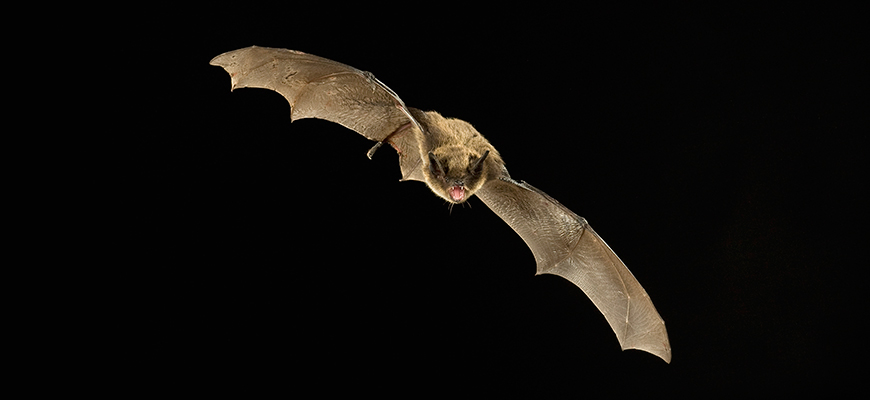
In the national park reserve, you’ll spot Little Brown Bats at dawn and dusk near open fields and fresh water. They’re useful members of our natural community, eating bugs that we consider pesky, like mosquitos. They have sharp little teeth and catch their prey in flight. A healthy bat population indicates healthy marshes and lakes.
3. It’s incredible
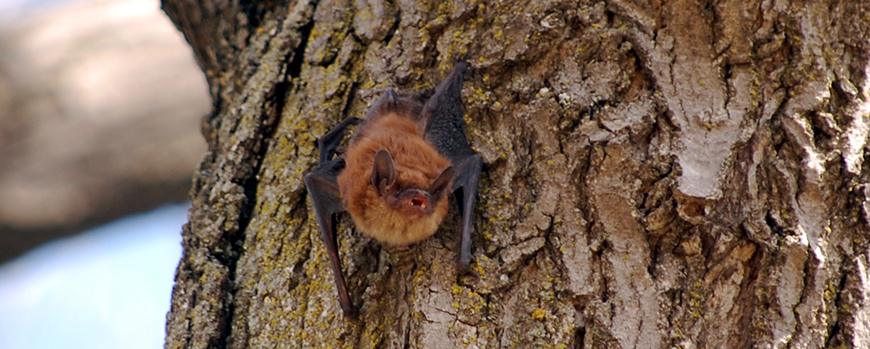
How can you not go crazy for bats? They’re the only mammal that flies and they hang upside-down to sleep.
The Little Brown Bat certainly lives up to its name. Its wingspan is only a bit bigger than the spread of an adult human’s hand. Little Brown Bats also sleep a lot. As well as hibernating during cold weather, they usually rest for about 20 hours a day.
Three ways to care for the Little Brown Bat:
1.Educate yourself
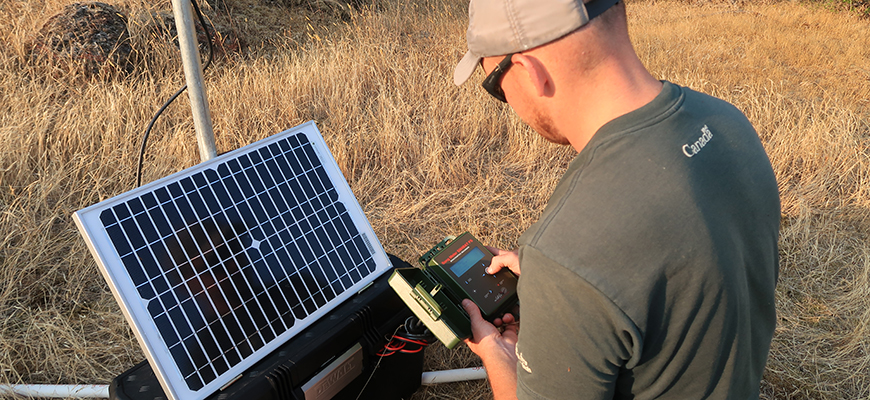
If we don’t know what kinds of bats we have in the park reserve, or how many, we can’t track how their numbers are changing over time. We need accurate data to protect bats.
Parks Canada’s action:
Park scientists have begun a bat monitoring program in Gulf Islands National Park Reserve. So far they have discovered that at least nine different species of bats currently live here, including the Little Brown Bat. The most commonly detected bats were the California Myotis and the Yuma Myotis. At some locations, they recorded hundreds of individual bats per night.Action you can take:
Become bat literate. Learn about your local bats.
2. Watch for stowaways
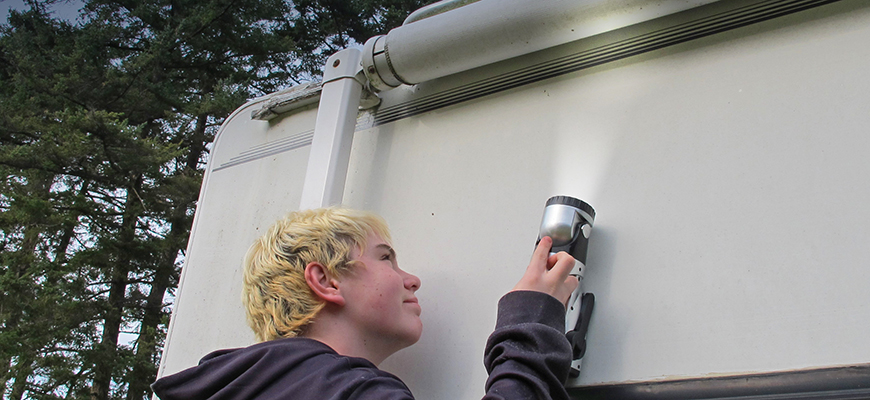
We suspect that bats in Gulf Islands National Park Reserve roost mainly in crevices in trees and rocks. We’ve also spotted them tucked under the metal roofing on park information kiosks. This tendency of bats to snuggle into small spaces can get them in trouble. On occasion, they crawl into a vehicle and go for an unexpected ride.
Parks Canada’s action:
We post reminders at campsites asking visitors to look out for stowaway bats.Action you can take:
Before you travel, check for bats in the nooks and crannies of your camper, trailer, truck or other large vehicle. You don’t want to unwittingly spread white-nose syndrome by transporting bats.
If you find a bat, wait to see if it leaves on its own. If it doesn’t, then carefully and gently nudge it with a broom to remove it from its resting place. Never touch a bat with your bare hands.
3. Support research

Do local bats migrate south in winter? Do they move from higher to lower elevations in different seasons? Unfortunately, we have few answers.
Parks Canada’s action:
We encourage university students to add to our knowledge about Parks Canada places. In Gulf Islands National Park Reserve, one student is researching the seasonal movements of bats using detectors placed year-round at the southern reaches of the park reserve. It will take years to gather enough data to form conclusions.Action you can take:
If you find a dead bat, report it to local wildlife authorities. Your report may help to track and prevent the spread of white-nose syndrome.
Learn more about Little Brown Bats and species at risk recovery
- Date modified :